INTRODUCTION BY PAOLO BARATTA, PRESIDENT OF LA BIENNALE DI VENEZIA
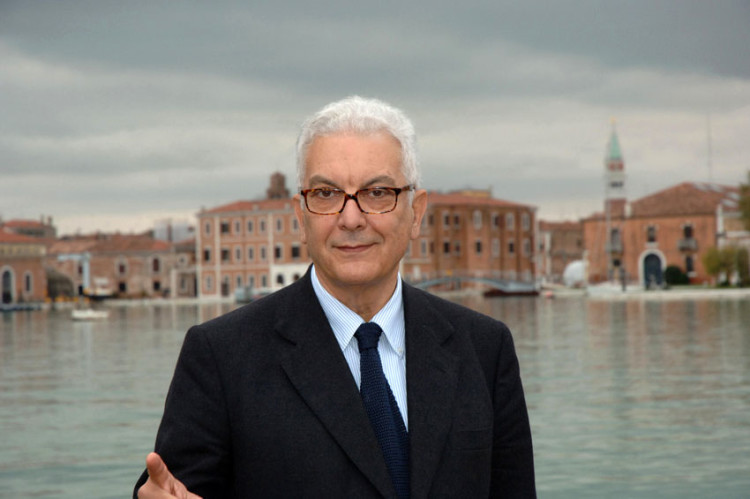
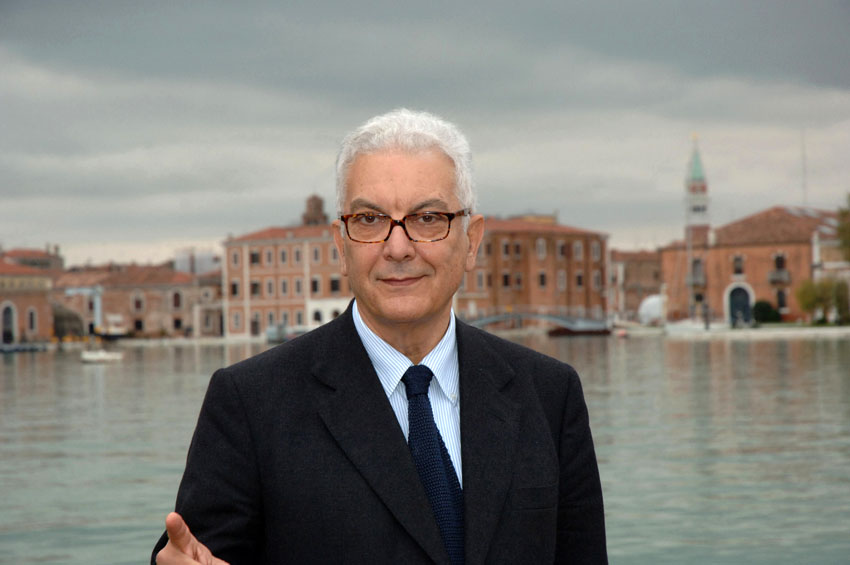
la Biennale di Venezia
54th International Art Exhibition
ILLUMInazioni – ILLUMInations
Introduction by Paolo Baratta, President of la Biennale di Venezia
The Biennale is like a wind machine
The Biennale is like a wind machine. Every two years, it shakes the forest, unveils hidden truths, gives new strength and light to new sprouts, showing older trunks and persisting branches from a different perspective (this year trunks are really old considering the intention expressed by the curator to open with Tintoretto).
The Biennale is a great pilgrimage, where in the works of artists and in the work of curators the voices of the world meet, to talk about their own and our future.
Art here is meant as a continuous evolution.
If a museum mainly qualifies itself for the works it owns (even though not exclusively, as museum directors today are asked to be also managers and impresarios), an institution like the Biennale qualifies itself more for its “modus operandi”, for the methods it implements, for the nature of the subjects who participate, for the choices made on method and principles and for the rules that inspire its organization, for the spaces it has available etc.: in short, for the Shape of the Institution that is reflected in the Shape given to the Exhibition held every two years. It is on the quality of this Shape that the achievement of our main objective depends: being held in high esteem by the world.
After 116 years of life of the Biennale, the Shape of the Exhibition today is the one fully defined in 1999, confirmed and improved in the following years. I am telling you this, because it is in fact from that year that the exhibition designed by pavilions has been put together, in a clear and distinct manner, with the exhibition that the curator appointed by the Biennale must organize as an “international exhibition”, with specific task (he/she is not in charge of the selection of the Italian pavilion).
Therefore now the Biennale Exhibition is founded on the following pillars.
1) First pillar: the Pavilions of participating Countries.
There are 28 settled country pavilions built inside the Giardini, used by the 30 official countries considered permanent participants. However, considered equally as participants, are countries that request to be invited to every Exhibition; out of them, some find a space inside the Arsenale, others find their spaces in different places in Venice. Participating countries this year, which confirmed their presence, are therefore 87 (they were 77 in the last Biennale).
Among them, some are here for the first time: the Principality of Andorra, Saudi Arabia, the People’s Republic of Bangladesh, and Haiti. Others have come back after some past participation: India (1982), Democratic Republic of the Congo (1968), Iraq (1990), the Republic of Zimbabwe (1990), South Africa (1995), Costa Rica (1993, afterwards with IILA), Cuba (1995, afterwards with IILA).
I remind you that for every Biennale, the states’ administrations managing pavilions (or the administrations entrusted by their states of pavilion’s management) appoint a commissioner and a curator.
In the fall preceding the Exhibition, a general meeting is held where the curator appointed by the Biennale illustrates his/her project design for “his/her” international exhibition. It is an informative meeting, and the curators from the various countries are not bound to it, and may implement their choices freely.
The countries’ Pavilions are a very important characteristic of la Biennale di Venezia. It is an old formula envisaging the presence of states and yet more than ever lively and vital. Precious in a globalization time, as it gives us the primary reference backdrop where to observe or better highlight the individual geographies of artists, always new, always different.
One may wonder to what extent these pavilions bring with them, however large the autonomy left to the curators, also the desire for representation expressed by the organizing country. Each of them has its story and its style. We can certainly say that in their pavilions, countries unveil the role played by contemporary art, as messenger of their present and of their cultural heritage. Actually, from the pavilions other revelations emerge, on realities and riches much deeper than the traditional claims or usual official and stereotyped images.
2) Second pillar: The International Exhibition organized by the Biennale’s curator.
Placed at the centre, in parallel to the series of countries’ Pavilions, the curator’s International Exhibition this year will be organized by Bice Curiger, who chose as title ILLUMInations (with 82 participating artists). The curator has been expressly requested to create a “boundless” exhibition. La Biennale has not appointed neither committees, commissions, nor different curators for different areas: it relies on the responsibility of one single curator (supported by his/her advisors and the Biennale’s structures for the implementation).
The choices made by the National pavilions’ curators and those of the Biennale’s curator turn out to be either shared or diverging. The dialectic relationship among these different choices represents a qualifying element of its international focus: an exhibition characterized by many eyes, many points of view.
3) Third pillar: The spaces available for the design of the great International Exhibition of the Biennale’s curator.
They had to be fit for the purpose. And for this reason, in 1998 we equipped the Biennale with the extraordinary spaces made up, on one side, of the central Pavilion and the Arsenale, on the other.
Spaces are critical elements of the Exhibition, which in such spaces and their special layout finds the most suitable way to create its own language. It is worth noting that since we realized such spaces and arranged the new exhibition plan, the number of countries asking to participate in the Biennale has considerably increased. They were 61 in 1999, now they are 87.
In recent years, we built and later on extended the new Italian Pavilion at the Arsenale, this year entrusted to Prof. Vittorio Sgarbi, who has been appointed the curator by the Italian Minister for culture.
4) An additional component: Collateral events
Non-profit organizations may submit projects for small exhibitions, to be held in the city of Venice, usually all along the six months of the exhibition. The Biennale’s curator, here again in full autonomy, judges their quality and admissibility as “collateral” events. Those admitted will be titled with the Biennale’s logo; they shall be included into a special section of the catalogue and advertised by the Biennale. This way, subjects, able to express quality choices, are offered a way to be present. In some cases, this opportunity has been caught by ethnic minorities, which choose the Biennale d’Arte to make their presence be heard and show their cultural identity. We have always attributed a great relevance to this opportunity (this year we received 83 requests, and the curator’s selection admitted around 50% of them).
5) A crucial element is the city of Venice, hosting this large number of vibrant energies on its territory for six months.
6) An increasingly important pillar of our construction is the attention paid to the public.
For a long time, the Biennale has developed educational activities and guided tours. Such activities are performed in particular with a growing number of schools of the region.
Nevertheless, this year we introduced a new field of action. After the successful experience we had with the Architecture Exhibition, we launched the “Biennale Sessions“ programme.
The programme is addressed to institutions, operating in the field of research and education in the domain of arts or similar like universities, academies of fine arts, research and training institutions. The aim is to grant special conditions to three-day visits organized for groups of at least 50 people, students and teachers, offering them meals at reasonable prices, the possibility to organize seminars in venues we offer them free of charge, assistance to the organization of the travel and subsistence. We would like that these institutions all over the world considered the Biennale d’Arte as a place to carry out, even if for a limited period of time, a work session with students, researchers and teachers.
In the past few days, we sent more than 2,300 letters to just as many institutions in the world and we are awaiting their replies.
During the Exhibition, open seminars will be held. “Meetings on Art” shall be organized in June and early in autumn.
With this pillar we want to confirm the role played by la Biennale di Venezia as an institution that is worth a pilgrimage, open to knowledge and to the spirit of research.
I already spoke about the role of the curator and the responsibility given to him/her.
The curator must possess an expert eye, independent mind, generosity towards artists, a strict selection ability, and great fidelity to that mysterious goddess that is quality.
A free look on the world.
These are the gifts which are recognized to Bice Curiger all over the world.
With Her we went back to Zurich. We started with Szeemann, precisely in 1999.
Some friends describe these 12 years of the Biennale like “the happy travel from Harald’s beard to Bice’s cherry red lipstick”.
We agree with Bice. In an age in which art has long since ceased the emphasis on the provocation of anti-art, we seek the ways of the dialogue between the artist’s work and our vision and our spirit, we want to understand and feel the “beyond” that art generously offers and whispers to us, we wish “illumination” as visitors, as art lovers, as individuals and as members of the human community.
And so, let there be “Illumination”!
..)(..
la Biennale di Venezia
54. Esposizione Internazionale d’Arte
ILLUMInazioni – ILLUMInations
Intervento di Paolo Baratta, Presidente della Biennale di Venezia
La Biennale è come una macchina del vento
La Biennale è come una macchina del vento. Ogni due anni, scuote la foresta, scopre verità nascoste, dà forza e luce a nuovi virgulti, mentre pone in diversa prospettiva i rami conosciuti e i tronchi antichi (e quest’anno i tronchi saranno davvero antichi vista l’intenzione della curatrice di aprire con Tintoretto).
La Biennale è un grande pellegrinaggio dove nelle opere degli artisti e nel lavoro dei curatori si incontrano le voci del mondo che ci parlano del loro e del nostro futuro.
L’arte è qui intesa come attività in continua evoluzione.
Se un museo si qualifica principalmente per le opere che possiede (anche se non esclusivamente, visto che ai direttori di musei si chiede oggi di essere anche manager e impresari), una istituzione come la Biennale si qualifica piuttosto per il suo “modus operandi”, per i metodi seguiti, per la natura dei soggetti che vi partecipano, per le scelte sul metodo e per i principi e le regole che ispirano la sua organizzazione, per gli spazi di cui dispone, ecc.: insomma per la Forma dell’Istituzione che si riflette nella Forma data alla Mostra che vi si tiene ogni due anni. Ed è dalla qualità di questa Forma che dipende il raggiungimento del principale nostro obbiettivo: ottenere la stima del mondo.
Dopo 116 anni di vita della Biennale, la Forma della Mostra attuale è quella definita in modo compiuto nel 1999 e confermata e perfezionata negli anni successivi. Dico questo perché è proprio a partire da quell’anno che alla mostra organizzata per padiglioni si affianca in modo netto e distinto la mostra che il curatore nominato dalla Biennale deve organizzare come “mostra internazionale”, con un compito netto non dovendo egli darsi carico della selezione del padiglione italiano.
La Mostra della Biennale si presenta dunque ora fondata sui seguenti pilastri.
1) Primo pilastro: i Padiglioni dei Paesi partecipanti.
Sono 28 i padiglioni fissi dei paesi costruiti all’interno dei Giardini, utilizzati da 30 paesi titolari considerati partecipanti permanenti. Sono però partecipanti ad egual titolo altri paesi che chiedono di essere invitati alla Mostra; di questi alcuni trovano spazio all’interno dell’Arsenale, altri trovano il loro spazio in luoghi diversi di Venezia. I paesi partecipanti quest’anno, ad oggi confermati, sono complessivamente 87 (erano 77 nell’ultima Biennale).
Tra questi alcuni sono presenti per la prima volta: Principato di Andorra, Arabia Saudita, Repubblica Popolare del Bangladesh, Haiti. Altri sono tornati dopo presenze antiche: India (1982), Repubblica Democratica del Congo (1968), Iraq (1990), Repubblica dello Zimbabwe (1990), Sudafrica (1995), Costa Rica (1993, poi con l’IILA) e Cuba (1995, poi con l’IILA).
Ricordo che per ogni Biennale le amministrazioni degli stati che gestiscono i padiglioni (o le amministrazioni cui gli stati hanno affidato la gestione del padiglione) nominano un commissario ed un curatore.
Nell’autunno che precede la Mostra si tiene una riunione generale nella quale il curatore nominato dalla Biennale illustra le linee del suo progetto per la “sua” mostra internazionale. Si tratta solo di una informazione, i curatori dei vari paesi non sono vincolati e possono compiere le loro scelte liberamente.
I Padiglioni dei paesi sono una caratteristica molto importante della Biennale di Venezia. Una formula antica di presenza degli stati eppure viva e vitale più che mai. Preziosa in tempi di globalizzazioni, perché ci dà il tessuto primario di riferimento sul quale possono essere osservate e meglio evidenziate le autonome geografie degli artisti, sempre nuove, sempre varie.
Ci si può chiedere in che misura questi padiglioni portino con sé, per quanto ampia sia l’autonomia lasciata ai curatori, anche desideri di rappresentazione del paese che li organizza. Ognuno ha la sua storia e il suo stile. Possiamo senz’altro dire che in essi i paesi rivelano il ruolo attribuito all’arte contemporanea quale messaggera del loro presente e della loro ricchezza culturale. Ma dai padiglioni vengono anche rivelazioni su realtà e ricchezze più profonde di quelle delle pretese o consuete immagini ufficiali e stereotipe.
2) Secondo pilastro: La Mostra internazionale del curatore della Biennale.
Al centro, parallela alla serie dei Padiglioni dei paesi, sta la Mostra Internazionale del curatore, quest’anno Bice Curiger, che ha scelto come titolo ILLUMInations (gli artisti presenti saranno 82). Il curatore (la curatrice) è chiamato espressamente a realizzare una mostra “senza confini”. La Biennale non ha nominato comitati o commissioni, né diversi curatori per diverse aree, ma si affida alla singolare responsabilità di un curatore (assistito dai suoi consiglieri, e, per l’esecuzione, dalle strutture della biennale).
Tra scelte dei curatori dei padiglioni nazionali e scelte del curatore della Biennale, tra mostra internazionale del curatore e mostra internazionale dei padiglioni, si determinano così liberamente scelte condivise o scelte diverse. Il rapporto dialettico tra queste diverse scelte rappresenta un elemento qualificante il suo carattere internazionale: una mostra dai molti occhi, dai molti punti di vista.
3) Terzo pilastro: Gli spazi per realizzare la grande Mostra internazionale del curatore della Biennale.
Dovevano essere adeguati allo scopo. E proprio per questo, nel 1998 abbiamo ampliato grandemente gli spazi che oggi sono costituiti: da un lato dal Padiglione centrale e dall’altro dall’Arsenale.
Gli spazi costituiscono un elemento essenziale della Mostra che, negli spazi e nella loro particolare articolazione e qualità, trova lo strumento più opportuno per formare il proprio linguaggio.
Val la pena ricordare che da quando abbiamo realizzato quegli spazi e chiarito il nuovo impianto della mostra è aumentato il numero dei paesi che chiedono di partecipare alla Biennale. Erano 61 nel 1999, sono oggi 87.
Negli anni recenti è stato realizzato e poi molto ingrandito il nuovo Padiglione Italia all’Arsenale, affidato quest’anno alla cura del prof. Vittorio Sgarbi, nominato curatore dal Ministro della cultura italiano.
4) Un ulteriore componente: Le partecipazioni collaterali.
Soggetti non profit possono presentare progetti per piccole mostre, da tenersi nella città di Venezia, normalmente per tutti i sei mesi della mostra. Il curatore della Biennale, anche qui in totale autonomia, giudica la loro qualità e ammissibilità come “collaterali”. Quelle ammesse possono fregiasi del logo Biennale, sono incluse in una sezione speciale del catalogo e sono pubblicizzate dalla Biennale. Si offre così a soggetti capaci di esprimere una scelta di qualità un modo di essere presenti. In alcuni casi l’opportunità è stata raccolta da minoranze etniche che scelgono l’occasione della Biennale d’Arte per far sentire la loro presenza e dimostrare la loro identità culturale. Abbiamo sempre attribuito grande importanza a questa possibilità (quest’anno sono state presentate 83 domande, la selezione del curatore ne ha ammesse circa il 50%).
5) Un elemento decisivo: la città di Venezia che per sei mesi accoglie sul suo territorio questo grande insieme di energie vitali.
6) Un pilastro sempre più importante della nostra costruzione è poi la cura del pubblico.
Da tempo la Biennale sviluppa attività educational e visite guidate.
Queste attività sono svolte con un numero sempre crescente di scuole della regione.
Quest’anno però abbiamo aperto un nuovo campo d’azione. Dopo l’esperienza compiuta favorevolmente con la Mostra d’Architettura, per la prima volta lanciamo il programma “Biennale Sessions”.
Esso è rivolto a istituzioni operanti nella ricerca e nella formazione nel campo delle arti o nei campi affini, Università, Accademie di Belle Arti, Istituti di formazione e di ricerca. Scopo è quello di offrire una facilitazione a visite di tre giorni da loro organizzate per gruppi almeno di 50 tra studenti e docenti, con vitto a prezzo di favore, la possibilità di organizzare seminari in luoghi offerti gratis, assistenza all’organizzazione del viaggio e soggiorno. Vorremmo che queste istituzioni considerassero la Biennale d’Arte un luogo dove svolgere, seppur per breve tempo, una sessione del loro lavoro di studenti, ricercatori, insegnanti.
Ho inviato nei giorni scorsi già oltre 2.000 lettere ad altrettante istituzioni del mondo, attendiamo le risposte.
Durante la Mostra si terranno poi seminari aperti. “Meetings on Art” saranno organizzati in giugno e alla ripresa autunnale.
Con questo pilastro vogliamo confermare il ruolo della Biennale di Venezia quale istituzione aperta alla conoscenza e allo spirito di ricerca, degna di un pellegrinaggio.
Ho detto dell’importanza del ruolo del curatore e della responsabilità lui (lei) affidata.
Il curatore deve avere occhio esperto, spirito indipendente, generosità verso gli artisti, severa capacità di selezione, grande fedeltà a quella misteriosa dea che è la qualità.
Sguardo libero sul mondo.
Queste doti il mondo riconosce a Bice Curiger.
Con Lei siamo tornati a Zurigo. Cominciammo con Szeemann, appunto nel 1999.
Alcuni amici descrivono questi 12 anni di Biennale come “il felice viaggio dalla barba di Harald al rosso ciliegia del rossetto di Bice”.
Concordiamo con Bice. In un’epoca nella quale l’arte ha da tempo cessato l’enfasi sulla provocazione dell’anti-arte, cerchiamo le vie del colloquio tra l’opera dell’artista e il nostro sguardo e il nostro spirito, vogliamo capire e sentire quel di più che l’arte con generosità ci dona e ci sussurra, desideriamo illuminazione come visitatori, come amanti dell’arte, come individui e come membri della comunità umana.
E che Illuminazione sia!

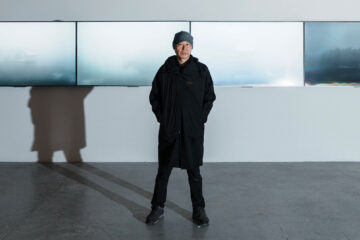
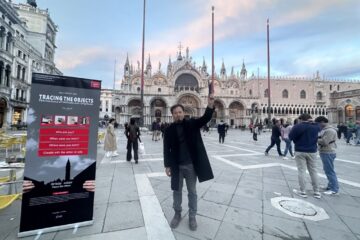

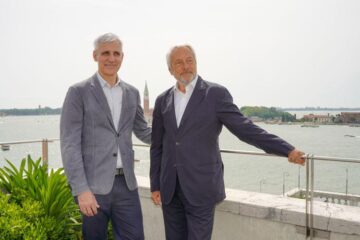

No Comment